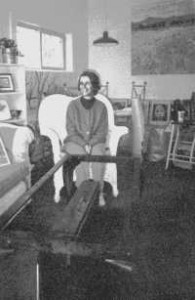Sidebar by Ed Quillen
Transportation – December 2000 – Colorado Central Magazine
Marshall Pass connects Arkansas River drainage to the Gunnison watershed by crossing the Continental Divide at 10,846 feet just south of the summit of Mt. Ouray.
It was doubtless used by the Utes, although their regular routes were more circuitous. To get from the Salida area to the Gunnison Country, they usually crossed Poncha Pass to Saguache and then headed west over Cochetopa Pass. That course was also followed by early-day prospectors headed for the Tin Cup area, then part of the Ute reservation, in the 1860s.
The written story of Marshall Pass starts in 1873, when Army Lt. George M. Wheeler was assigned to help complete a military survey of the American West. Wheeler (whose name is on New Mexico’s highest peak) put Lt. William L. Marshall in charge of surveying the San Juan area.
That fall, they were camped near present-day Silverton when the snow began to accumulate. It was time to return to headquarters in Denver, and they planned to use the regular route over Cochetopa Pass.
Marshall got a severe toothache which swelled his jaw and reduced his diet to a thin gruel. A blacksmith offered to pull the offending tooth, but Marshall preferred to go to a regular dentist in Denver, as quickly as possible.
So he was looking for a shortcut when he left the main party and set off with his packer, Dave Mears (no relation to the famous Otto).
He had intended to head north and then turn west to cross the Divide in the area of Independence Pass, but heavy snow blocked that route. Marshall and Mears turned west toward a low point on the ridge, where the snow wasn’t quite as deep. Even so, it took them six days to manage the 12 miles of wind, snow, and downed timber near the summit.
After seeing that this gap took him in the right direction, Marshall halted for a day on the top, and made surveys despite his agonizing toothache. He and Mears got to Denver four days before the main party, and saved about 125 miles in the process.
In 1877, Otto Mears got a charter to build a toll road over Marshall Pass, and in the early summer of 1880, he was advertising in Salida’s Mountain Mail: “If you are bound for the Gunnison, take the Marshall Pass Road. The route is now open, and is by thirty miles the shortest road to Gunnison City, Pitkin, Ruby Camp, Virginia City, Hillerton, Gothic, Crested Butte and all other points in the Gunnison Country. It is only 60 miles from South Arkansas [Salida’s name at the time] to Gunnison City.”
By then, the Denver & Rio Grande Railroad had reached Salida. The railroad bought Mears’s toll road for $13,000, and began extending its narrow-gauge rails west; the first train reached Gunnison on Aug. 6, 1881.
Passenger service continued until Nov. 24, 1940, with trains No. 315 and 316, named “the Shavano.” After that, the main freight was livestock from the Gunnison Country and coal from Crested Butte, bound for the steel mill in Pueblo.
The mine closed in 1952, trucks were hauling cattle over improved highways, and the railroad got permission to abandon the line in 1953. The rails came up in 1955, and the right-of-way became a county road in 1956. In 1962, a natural-gas pipeline was run over the pass.
Marshall Pass is not kept open in the winter, but in the summer, regular autos can handle this winding and scenic route across the Great Divide. Little of the railroad remains — a few foundations at the summit, a water tank at Sargents on the west side, and cinders from coal-burning locomotives all along the way.
— Ed Quillen

